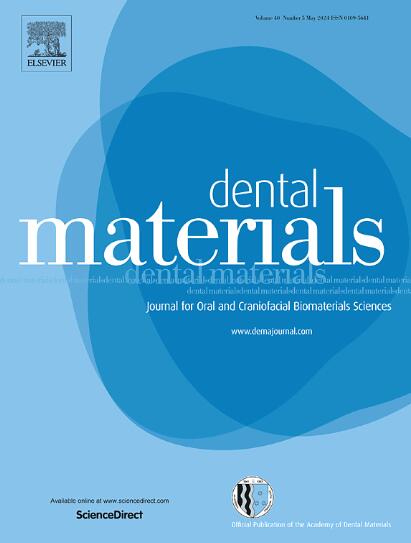来自人类脱落牙齿的干细胞微球表现出卓越的牙髓再生能力。
IF 4.6
1区 医学
Q1 DENTISTRY, ORAL SURGERY & MEDICINE
引用次数: 0
摘要
目的:与传统的二维(2D)组织培养方法相比,三维(3D)细胞培养球的潜在优势近年来日益受到关注。从人类脱落牙齿(SHEDs)中提取的干细胞在牙髓再生应用方面具有巨大潜力。然而,SHEDs微球形成的可行性及其对牙髓再生的影响仍不清楚:本研究分离、鉴定了SHEDs,并在超低附着力六孔板中培养SHED微球。通过活死细胞染色、茜素红染色、油红 O 染色、划痕实验、免疫荧光、透射电子显微镜扫描、Western 印迹、RNA 测序和裸鼠皮下移植模型,比较了 SHED 微球与传统二维培养的生物学特性:结果:我们发现 SHED 细胞能形成内部结构致密的微球。与 SHED 细胞相比,SHED 微球在生物特性方面具有明显优势,能在体外保持细胞活性并增强细胞分化、迁移和干性。RNA-seq显示,SHED微球对细胞发育、神经发生调控、骨骼系统发育、组织形态发生的单一通路具有潜在影响。在体内,与传统的二维培养相比,SHED微球促进了牙髓组织的生成:通过三维细胞培养将 SHED 微球化,增强了其牙髓再生能力,为牙髓再生和牙髓疾病的临床治疗提供了一种新策略。本文章由计算机程序翻译,如有差异,请以英文原文为准。
Microspheres of stem cells from human exfoliated deciduous teeth exhibit superior pulp regeneration capacity
Objectives
Engineering spheroids to create three-dimensional (3D) cell cultures has gained increasing attention in recent years due to their potential advantages over traditional two-dimensional (2D) tissue culture methods. Stem cells derived from human exfoliated deciduous teeth (SHEDs) demonstrate significant potential for pulpal regeneration applications. Nevertheless, the feasibility of microsphere formation of SHEDs and its impact on pulpal regeneration remain unclear.
Methods
In this study, SHEDs were isolated, identified, and cultured in ultra-low attachment six-well plates to produce SHED microspheres. The biological properties of SHED microspheres were compared to those of traditional 2D culture using live-dead staining, Alizarin red staining, Oil-red O staining, scratch experiments, Immunofluorescence, Transmission electron microscopy scan, Western blotting, RNA sequencing, and a nude mice subcutaneous transplantation model.
Results
We found SHED cells can form microspheres with a dense internal structure. SHED microspheres exhibited notable advantages over SHED cells in terms of biological properties, maintaining cell activity and enhancing cell differentiation, migration, and stemness in vitro. RNA-seq revealed that the SHED microspheres potentially influenced cell development, regulation of neurogenesis, skeletal system development, tissue morphogenesis singling pathway. In vivo, SHED microspheres promoted the generation of pulp tissue in dental pulp compared to traditional 2D culture.
Conclusions
Microsphereization of SHED through 3D cell culture enhances its pulp regeneration capacity, presenting a novel strategy for dental pulp regeneration and the clinical treatment of dental pulp diseases.
求助全文
通过发布文献求助,成功后即可免费获取论文全文。
去求助
来源期刊

Dental Materials
工程技术-材料科学:生物材料
CiteScore
9.80
自引率
10.00%
发文量
290
审稿时长
67 days
期刊介绍:
Dental Materials publishes original research, review articles, and short communications.
Academy of Dental Materials members click here to register for free access to Dental Materials online.
The principal aim of Dental Materials is to promote rapid communication of scientific information between academia, industry, and the dental practitioner. Original Manuscripts on clinical and laboratory research of basic and applied character which focus on the properties or performance of dental materials or the reaction of host tissues to materials are given priority publication. Other acceptable topics include application technology in clinical dentistry and dental laboratory technology.
Comprehensive reviews and editorial commentaries on pertinent subjects will be considered.
 求助内容:
求助内容: 应助结果提醒方式:
应助结果提醒方式:


